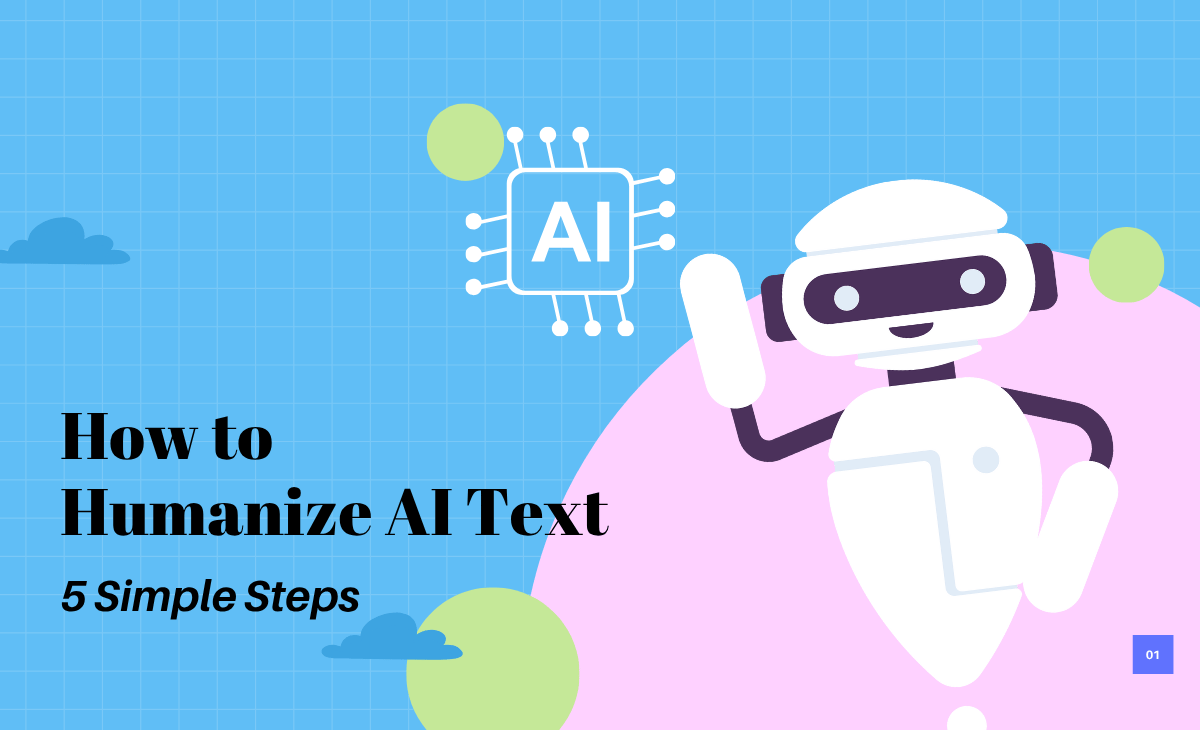The biggest problem with using an AI writing tool right now, be it for marketing or research, is its tone. Not only is it robotic and lacks empathy, but it is also repetitive and painfully predictable. Needless to say, using AI now comes with the need to humanize AI-Text, otherwise it all goes for a toss.
But as AI content creation saves time, money, and effort, we cannot risk letting go of its use altogether. No one has the time to devote days to research or sit with a brief waiting for the creative juice to flow.
We need urgent solutions to stay relevant, above the competition, and most importantly, connect with the readers in a way that converts.
But how do we do that? It is simple, we intervene in the process and take control of the narrative as we maintain scalability.
Why Humanize AI-Generated Content?
The answer to this question is simple: no one likes to read AI-generated content. Before we talk about the technical aspect of it, you must understand that storytelling in content is what sells your product.
First things first, your brand will just be a “scroll past ad or product” if you tell the same old story. If you wish to do something out of the box and stay ahead of the competition, you have to be unique.
But the problem here is that AI cannot promise to deliver that unique experience or have a personal tone. As it operates on datasets and shared experiences, it mostly tells you the same thing it tells your competitors.
Secondly, every search engine will always push an article that has an authentic voice. If you look at it from an SEO perspective, it is all about Experience, Expertise, Authoritativeness, and Trustworthiness (E-E-A-T). Or a genuine piece of writing where the writer knows what they are talking about.
According to Neil Patel’s research, it has been categorically pointed out that human-generated content always tends to perform better. It gets more traffic monthly, which categorically improves each day. To sum it up, it is important to make AI writing as human as:
✅ Humanized writing forms a better connection with your users.
✅ AI lacks understanding of the pain points and the context of a live setting.
✅ Adding a personal touch to AI writing makes it more search engine and SEO friendly.
✅ You can retain your brand’s identity and voice and mold it your way.
Hence, needless to say, AI-generated content is a great way to fill up the calendar or maybe build a social media presence. But if you want to lure organic traffic by building a genuine user base, you have to personalize your content. The best part in all this? It is as easy as it can get.
1. Understand Your Audience's Needs
As a brand, business, or service, your ultimate aim is conversion and giving your users what they need. Most of the brand success stories that you read or see or read online have the following things in common:
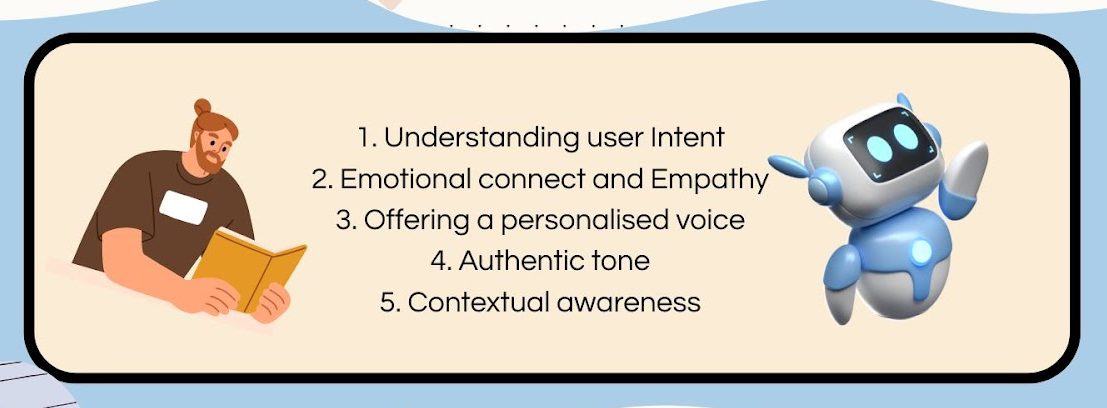
You will be able to understand this the moment you think about this in a more refined way from the perspective of a user. Let's say you are looking for an AI tool that lets you summarize research papers.
The idea behind your purchase will be to make the research process more scalable and help you cite sources with ease. In fact, a quick summary of the existing papers will be an added advantage for you. You will never go for a tool that only prioritizes writing.
💡This is what understanding your audience means.
👉 As a brand, you must know exactly how your product or content fits into your audience’s workflow. More importantly, your AI-generated content should reflect this understanding clearly.
2. Edit for Flow, Rhythm, and Voice
This is the most crucial part for improving AI content readability. The problem with machine-generated content is that it is very bland. No matter how great your product is, AI will take away its zest. If you wish to see the numbers at some point, you have to take control of the narrative.
At this point, there are two ways you can do this. You either pick up one blog each day to refine your tone. But that somehow defies your purpose of using AI altogether. Or, you can rely on a tool like Humanizeai.io to keep up with your content needs without breaking a sweat.
How can Humanizeai.io help?
The urge to rely on machine-generated writing comes from its capability to mass-produce content while saving money. But it can only be a fair trade when the generated content serves its purpose, or there is a way it can be molded to do so. That’s where HumanizeAI comes in to save the day.
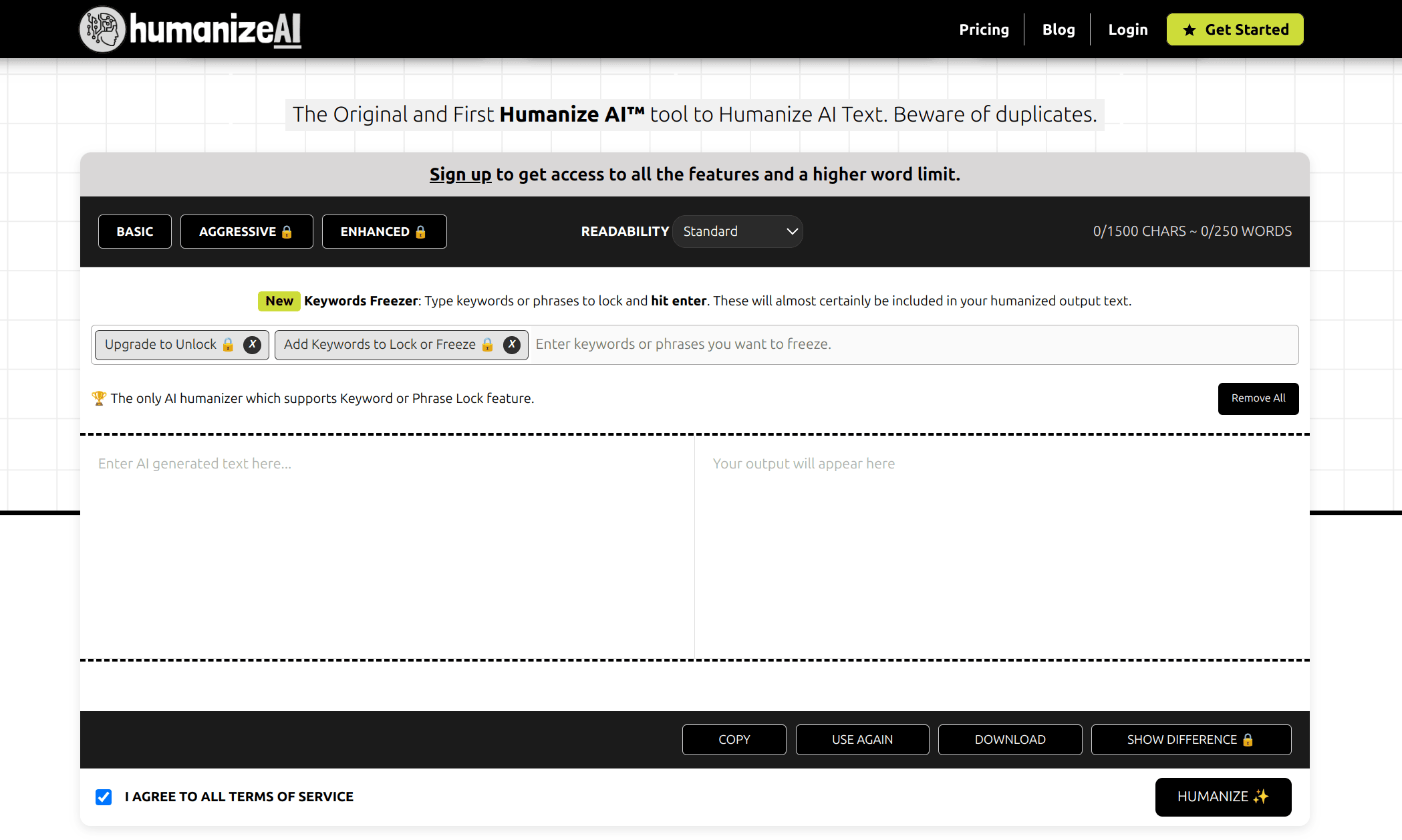
Using HumanizeAI is like applying a filter on your pictures, but for your writing. It takes any AI-generated text and blends it to make it sound human. You can
🚨 Edit your flow, rhythm, and voice
🚨Add contextual and emotional nuances all in just a click.
Firstly, it saves you a ton of money and the additional hassle of investing in manpower and multichannel maintenance. Secondly, it is extremely easy to use.
➡️Let us go back to the previous example and now assume that you are a seller who is trying to push your AI-powered research tool. Let us ask ChatGPT to write an introduction for you and see how HumanizeAI can refine it with more human essence.
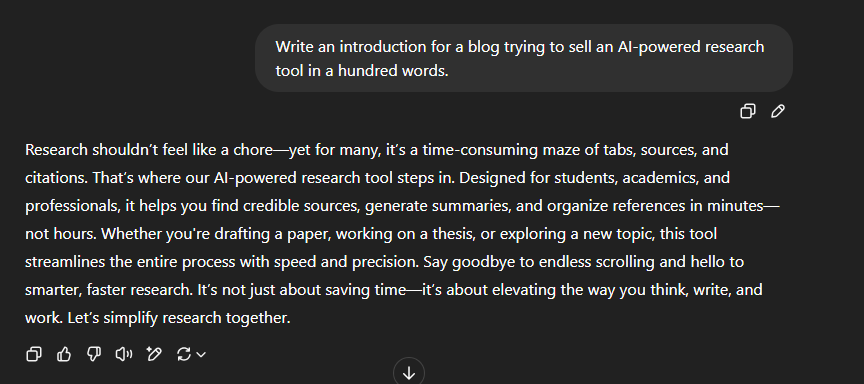
ChatGPT generated demo prompt
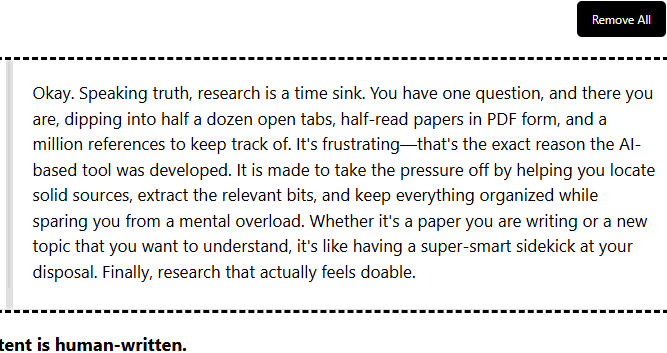
Refined by HumanizeAI
As you can see from the results, both the AIs are talking about the same thing but from a varied perspective, which makes all the difference. The moment you rewrite AI text with HumanizeAI, you get :
- Empathy
- Emotional connect
- Imagery
- Flow and rhythm
- User-centric voice rather than brand-centric, tired tone
- An attempt to build trust
- Ending with a hook
3. Infuse Real Experiences and Human Insight
One of the easiest ways to add a personal tone to machine-generated content and build trust is by talking about real-life experiences. It not only compels your users to look at you with trust, but also convinces Google about your authenticity.
Honestly speaking, AI has to go a long way to establish personal connections as it lacks the capability of a hands-on experience. It can mimic your tone, but it is completely incapable of telling your story. Be it a quick anecdote on the product or a detailed hands-on review, these are some of the most efficient ways to add a personal tone to your narrative.
The only thing that can pull users or help you build organic traffic is credible stories, perspective, and, to some extent, the vulnerability of it all. You should always be on the lookout to connect with your audience, be it with your journey or behind-the-scenes processes. The idea is to rely on AI’s speed but reject the same tired robotic narrative that adds no layers.
4. Inject Emotion and Empathy
Emotion and empathy are what separate a heartfelt piece from machine-generated content. We often tend to confuse crisp writing with a lack of empathy. But in reality, an ideal piece of content in today’s time should be to the point and yet evoke the right emotion.
Our AI models are yet to differentiate between the concept of fluff and feeling, which is the main reason for this discontent. If you wish to humanize AI-generated content, you have to break its rigidity and pattern with emotions. Not only that, but AI is also unaware of the art of layered storytelling, which is mindful of the cultural nuances.
💡Quick Tip: The most important thing you need to remember here is that you don’t have to be dramatic to inject emotion. All it takes is the right tone, maybe a touch of humor, or just a reassurance that you understand what your users go through. It is through this connection of shared emotion that you establish a loyal customer base.
5. Maintain Brand Consistency Across All Content Formats
One of the less talked-about downsides of AI-generated content is that it lacks consistency. If you have noticed, even if the prompt is the same, AI is designed to answer with a new piece of content each time. So this disrupts the multi-content channel flow: a critical aspect of brand management in today’s time.
The true test of content consistency lies in the fact that you need to be true to your brand’s voice. Ideally, what AI does is it adapts a formal tone for the blogs and a casual one for other social media channels. Even though a bit of variety is always a welcoming change but an entire change of the narrative only confuses users.
It might reflect poorly on your approach towards your users, as it can give out the impression that you are still looking for a stance. For example, if you rely on AI chatbots for initial customer interaction and yet have a very friendly social media presence, it can backfire. As the AI bot’s robotic nature can imply, you are not a customer-friendly space, and so on.
Conclusion
At this point, rejecting the comfort and swiftness of AI-generated content is like stepping down from the competition willingly. But, at the same time, only relying on it for your entire marketing operation is a risky and futile move.
The idea is to understand that AI is not there to replace you, but to work for you!
When you humanize AI-text, it is not only about SEO or a better ranking. It is more than that, it is about building meaningful content that reflects who you are and what your audience truly needs. To sum it up, it is that one extra step that you take that has the power to change your brand narrative forever.
FAQ
What does it mean to humanize AI content?
The concept of humanizing AI content is about adding human nuances and experiences to machine-generated writing. It adds great leverage for brand engagement and SEO standards and includes concepts like adding emotional depth, personal insights, natural flow, and brand-specific tone.
How does HumanizeAI.io improve AI-written copy?
HumanizeAI is designed to refine any machine-generated work with just a click. It is like adding a filter that replaces the obvious signs of an AI-generated work and makes the content more readable. By effortlessly adding rhythm, tone, flow, and context to your writing, it helps you build a strong connection with your users.
Does Google penalize AI-generated content?
Well, there is no direct penalty for AI-generated content, but its use has its own repercussions. Google is programmed to only reward content that asserts Experience, Expertise, Authoritativeness, and Trustworthiness (E-E-A-T). Hence, this makes it comparatively difficult for AI-generated content to make its mark on the rankings.
Can humanized AI content increase conversion rates?
Yes, humanized AI content resonates emotionally with readers and feels authentic, which prompts a better emotional connection. This also results in a better bond of trust, which ultimately leads to more conversions.
How to humanize AI-generated text?
If you wish to humanize AI-generated content, you need to have a personalized narrative. As you keep adding personal stories, emotional language, and relatable examples, you refine the tone of your generated writing. But if you are not in for such a hassle, you can always rely on Humanize AI to get the job done. It helps you turn your robotic briefs into a narrative that speaks to the people and forms an instant bond with them.

